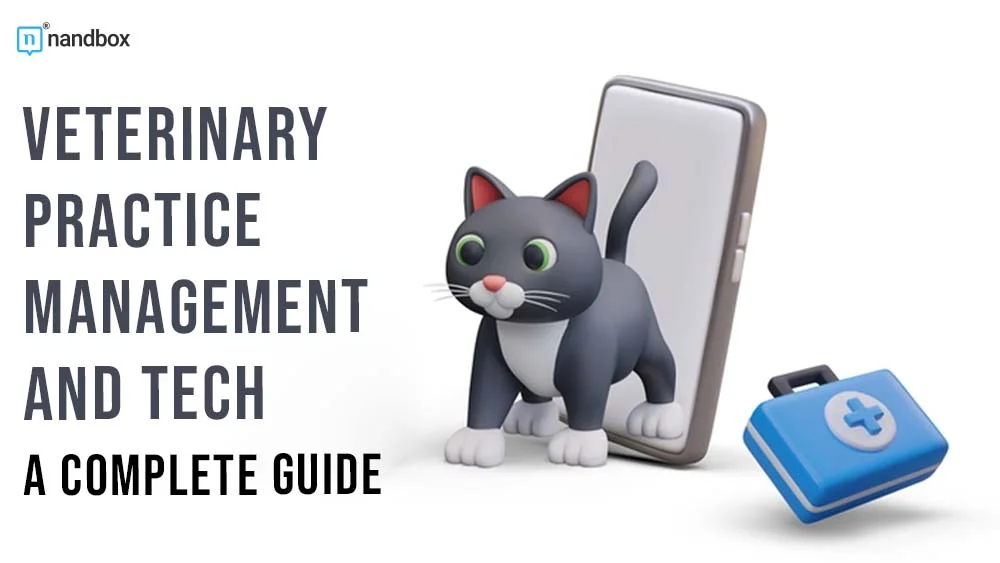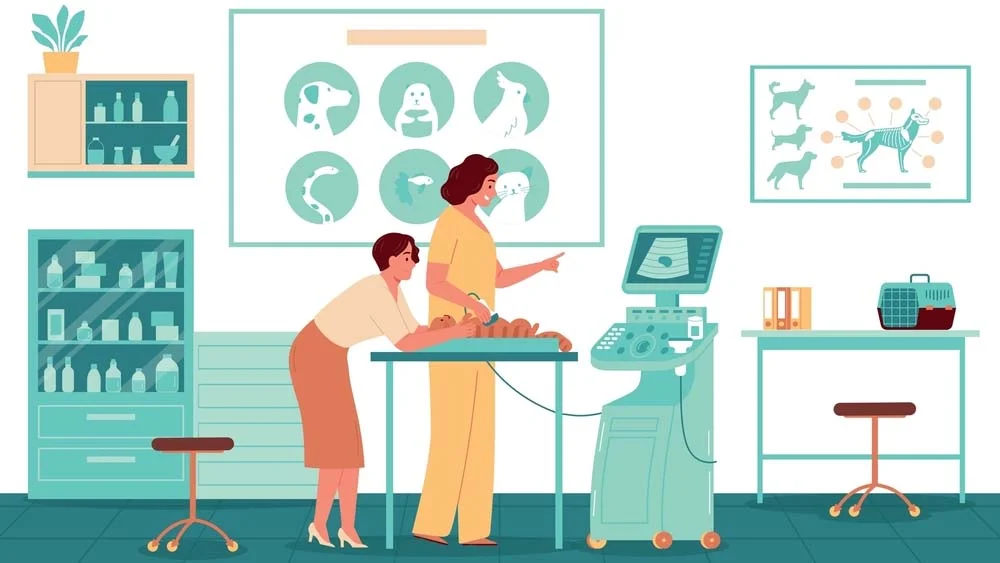In recent years, the veterinary industry has seen a significant transformation due to technological advancements. These innovations are reshaping veterinary practice management, significantly improving efficiency, enhancing patient care, and streamlining operations.
From AI-driven diagnostic tools to sophisticated practice management software, technology is not only improving the quality of care provided to animals but also optimizing communication between veterinarians and pet owners. The U.S. veterinary reference laboratories market was valued at $660 million for production animals and $315 million for companion animals in 2016. As we explore further, it becomes clear that advancements in technology are raising the bar for veterinary care.
The Digital Revolution in Veterinary Care
The integration of technology in veterinary practices is no longer just a trend; it’s become essential. With advancements in artificial intelligence (AI), and digital tools significantly enhancing diagnostic accuracy, the effects on practice management efficiency and animal care outcomes are profound.
This digital revolution is redefining the standards for how veterinary clinics operate and provide care for our beloved pets, ensuring more precise treatments and efficient service delivery. Also, modern veterinary practices are adopting digital tools to enhance communication with pet owners, improving engagement and compliance.
Streamlining Administrative Tasks
One of the key advantages of incorporating technology into veterinary practices is the automation of labor-intensive administrative tasks.
Automating processes such as billing, invoicing, and record-keeping significantly reduces the hours spent on these tasks. The time saved each week allows for:
- Enhanced Patient Care: Veterinary staff can dedicate more attention to patient care, ensuring animals receive the best possible treatment.
- Reduced Staff Stress: Less time spent on paperwork reduces stress, allowing staff to focus on more rewarding aspects of their jobs.
- Improved Work-Life Balance: Practice owners and employees benefit from better work-life balance, contributing to overall job satisfaction and productivity.
Moreover, these technological improvements can significantly impact veterinary practice valuation multiples, potentially increasing the overall value of the practice due to enhanced efficiency and profitability.
This boost in valuation not only reflects improved day-to-day operations but also makes the practice more appealing to potential buyers or investors, who value advanced, scalable solutions.
Core Technological Innovations Transforming Veterinary Practices
Artificial Intelligence and Machine Learning in Veterinary Medicine
- Current Usage and Familiarity
- AI has become an integral part of veterinary medicine, widely used for diagnostic imaging, and increasingly familiar to most practitioners.
- Key Benefits of AI
- Enhanced Diagnostics: AI significantly improves accuracy through sophisticated image analysis.
- Speed: Accelerates the interpretation of complex medical data.
- Personalized Care: Allows for the creation of tailored treatment plans using extensive data analysis.
Practice Management Information Systems (PIMS)
- Role in Veterinary Practices
- PIMS is critical for enhancing the smooth operation of veterinary clinics by integrating various administrative tasks.
- Core Functions
- Record Management: Helps in the efficient management of electronic medical records.
- Scheduling: Facilitates appointment bookings and sends reminders.
- Inventory: Manages inventory levels and automates ordering.
- Financials: Aids in billing and financial reporting.
- Impact
- PIMS frees up veterinary staff to focus more on direct animal care by automating essential administrative functions.
Digital Communication Tools
- Adoption and Impact
- Modern veterinary practices are adopting digital tools to enhance communication with pet owners, improving engagement and compliance.
- Benefits
- Compliance: Boosts rates of appointment and medication adherence.
- Client Satisfaction: Elevates overall satisfaction through effective and timely communication.
- Strategic Importance
- These tools play a vital role in keeping pet owners informed and engaged, ensuring continuous care that extends beyond the clinic walls.
Enhancing Diagnostic and Treatment Capabilities
This is where technology and veterinary medicine have integrated to improve the accuracy of diagnosis and hasten the treatment process. Digitization of radiography and laboratory equipment has greatly reduced the time used in diagnosis.
This huge reduction in the time taken for diagnosis has allowed veterinarians to make quicker and more informed treatment decisions, which is of vital importance in emergency or critical care situations, thereby saving lives.
Improving Client and Patient Care
Wearable technology for pets brought in new levels of proactive health monitoring, whereby a veterinarian could much more effectively diagnose health issues earlier, monitor chronic conditions better, and recommend personalized care with pinpoint accuracy.
Additionally, through mobile applications and web portals, health records, appointment schedules, and even educational resources are easily accessible to owners. Integration of technology further reinforces the partnership between the veterinarian and client in managing pet health for better outcomes and informed decision-making.
Comparing Traditional vs. Technology-Enhanced Veterinary Practices
To illustrate the transformative impact of technology on veterinary practice management, let’s compare traditional methods with technology-enhanced approaches:
| Aspect | Traditional Practice | Technology-Enhanced Practice |
| Record Keeping | Paper-based charts | Electronic medical records |
| Appointment Scheduling | Phone calls and manual entry | Online booking and automated reminders |
| Diagnostic Imaging | Film-based X-rays | Digital radiography with AI-assisted analysis |
| Client Communication | Primarily phone and in-person | Multi-channel: email, SMS, app notifications |
| Inventory Management | Manual counting and ordering | Automated tracking and reordering systems |
| Billing | Manual invoicing and payment processing | Integrated POS systems with digital payment options |
| Health Monitoring | Periodic check-ups | Continuous monitoring through wearable devices |
| Treatment Planning | Based on individual vets’ experience | AI-assisted, data-driven recommendations |
Navigating the Challenges of Adoption and Integration
Integrating advanced technology into veterinary practices offers substantial benefits but comes with its own set of challenges:
- Initial Implementation Costs: Substantial upfront investments can be a hurdle, particularly for smaller practices or those with tight budgets.
- Training Needs: A significant number of practices encounter difficulties in training staff to use new systems effectively.
- Data Security Concerns: With more patient records and financial information being digitized, robust cybersecurity measures are crucial to protect sensitive data.
- Resistance to Change: Overcoming hesitancy among staff members who prefer traditional methods requires clear communication of benefits and comprehensive training.
- Maintaining the Human Touch: As practices lean more on technology, ensuring the preservation of personal connections in veterinary care is essential.
The Future of Veterinary Practice Management
Looking ahead, the integration of technology within veterinary practices is poised to deepen, driven by several emerging trends and technologies:
- Telemedicine: This enables remote consultations and follow-ups for non-emergency cases, greatly improving access to veterinary care for pet owners regardless of location.
- 3D Printing: Veterinarians can use this technology to create custom prosthetics and surgical models, which can enhance the precision and effectiveness of complex procedures.
- Virtual Reality (VR): VR serves as an advanced educational tool, offering immersive training experiences for veterinary students and professionals seeking continuing education.
- Blockchain: This technology offers enhanced traceability for pet medications and supplies, ensuring authenticity and proper tracking throughout the supply chain.
- Advanced Diagnostics: Innovations like next-generation sequencing are pushing the boundaries of disease identification and treatment planning, offering more precise and tailored veterinary care.
Conclusion
So far, technology adoption within the veterinary practice management process is not a fad; rather, it is an important shift in the way we manage animal healthcare. From AI-assisted diagnostics to comprehensive practice management software, the tools give much power to the professionals for value care with efficiency.
FAQs
How is changing technology helping veterinary medicine and practice?
Advanced technology improves diagnostic precision, enhances treatment options, and optimizes practice management through integrated software solutions.
What is the growing role of technology in a veterinary practice?
Increasingly, technology supports veterinary practices by automating administrative tasks, improving patient diagnostics, and enhancing communication with pet owners.
What are the technological advancements for veterinarians?
Key advancements include AI for diagnostic imaging, cloud-based management systems, and mobile health monitoring devices for pets.





